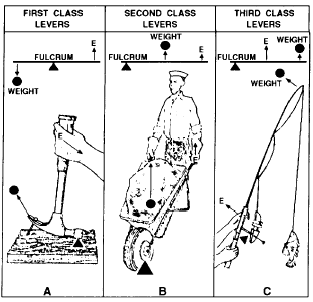Had a chance to help a grand daughter with homework.
5th grade science and the book was describing levers with first class, second class and third class levers. I've never heard of "classes" of levers. I told her to tell her teacher that grandpa didn't agree with the book's description. LOL.
Some drawings didn't make sense, at least common sense!!
Can anyone "shed some light" on this?
5th grade science and the book was describing levers with first class, second class and third class levers. I've never heard of "classes" of levers. I told her to tell her teacher that grandpa didn't agree with the book's description. LOL.
Some drawings didn't make sense, at least common sense!!
Can anyone "shed some light" on this?


